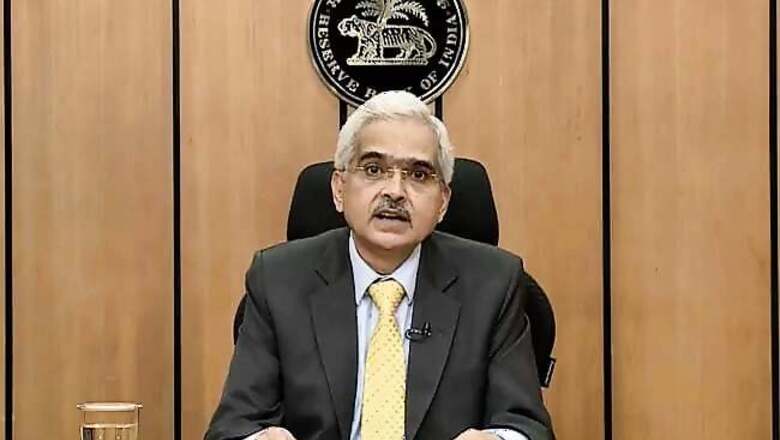
views
Reserve Bank of India (RBI) Governor Shaktikanta Das on Tuesday has projected India’s economic growth projection for the financial year 2022-2023 at 7.8 per cent. The growth rate for the current financial year is retained at 9.2 per cent. The six-member Monetary Policy Committee headed by Reserve Bank of India Governor Shaktikanta Das started deliberations on the bi-monthly policy review on Tuesday.
Further, the CPI inflation projection for FY23 is slated at 4.5 per cent, Reserve Bank of India governor said. The RBI governor expects inflation to peak in the current quarter with tolerance band, moderating in the second half of next fiscal.
“On the assumption of a normal monsoon in 2022, CPI inflation for 2022-23 is projected at 4.5 per cent with Q1 FY 2022-23 at 4.9 per cent; Q2 at 5.0 per cent; Q3 at 4.0 per cent; and Q4:2022-23 at 4.2 per cent, with risks broadly balanced,” RBI said in its statement.
“Since the December 2021 MPC meeting, CPI inflation has moved along th expected trajectory. Going forward, vegetables prices are expected to ease further on fresh winter crop arrivals. The softening in pulses and edible oil prices is likely to continue in response to strong supply-side interventions by the Government and increase in domestic production. Prospects of a good Rabi harvest add to the optimism on the food price front,” said Das.
“Adverse base effect, however, is likely to prevent a substantial easing of food inflation in January. The outlook for crude oil prices is rendered uncertain by geopolitical developments even as supply conditions are expected to turn more favourable during 2022,” Das added.
According to a Reuters poll, India’s retail inflation that will be officially released on Monday, likely accelerated to 6 per cent in January, the upper limit of the Central bank’s tolerance band, driven by higher consumer goods and telecom prices along with a comparatively low rate a year ago.
Inflation is climbing across the world and India is no exception but price rises have stayed relatively tame by historical standards, allowing the central bank to leave interest rates unchanged for now, Reuters reported.
Further, the Central bank has left the benchmark interest rate or repo rate — the rate at which banks borrow from the Central bank — unchanged at 4 per cent for the tenth consecutive time and decided to continue with accommodative stance. “Interest rates are a function of inflation and growth scenarios as the governor stated and given the global uncertainty, status quo by RBI was a better approach than any rate changes,” said Vivek Iyer, partner and leader, financial services risk, Grant Thornton Bharat
The RBI has adopted an ultra-loose monetary policy in the wake of coronavirus pandemic and in order to shore up the economy with adequate liquidity, it has last slashed key rate to record low of 4 per cent and it has been held at that level since May 2020.
Read all the Latest Business News here



















Comments
0 comment